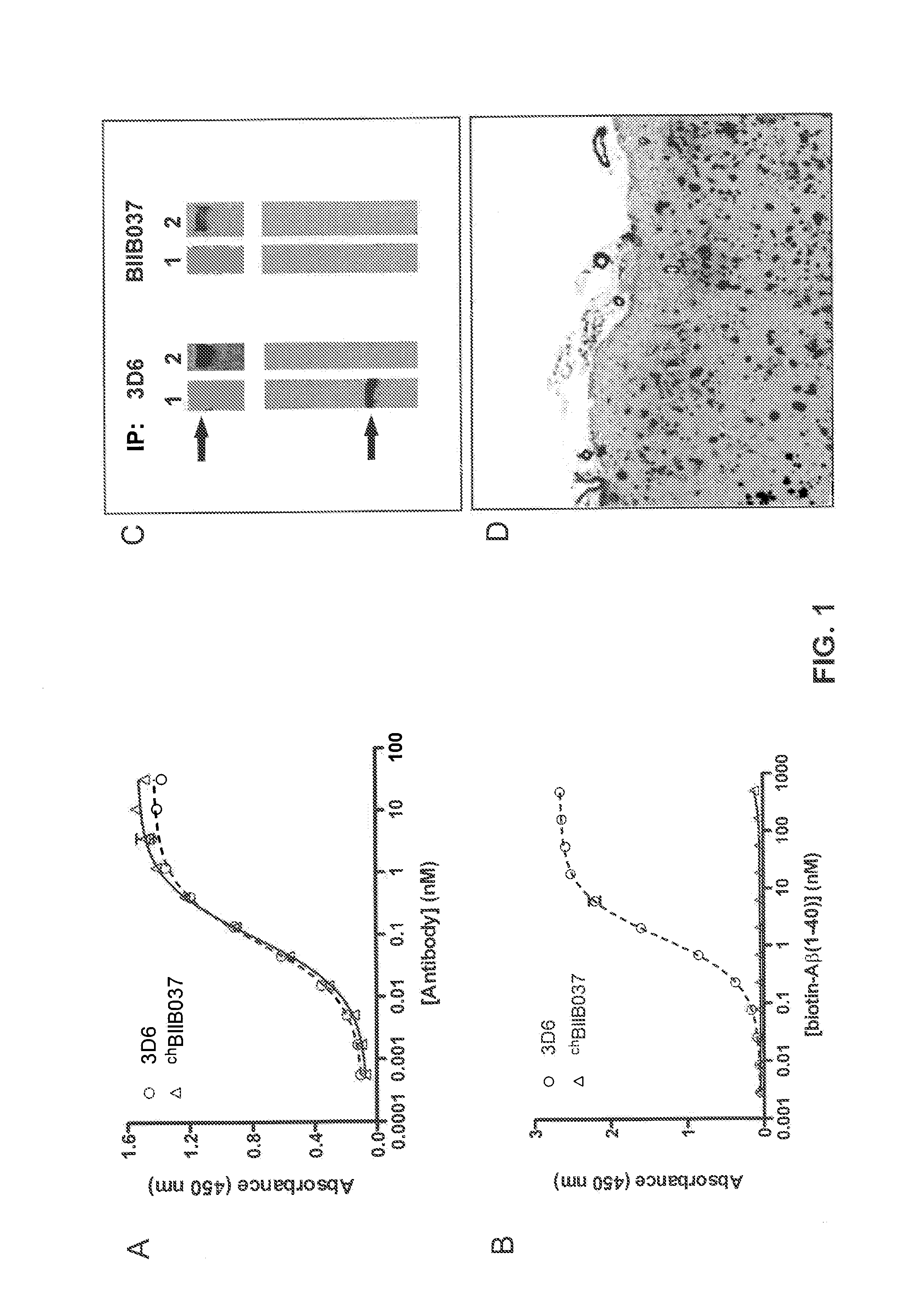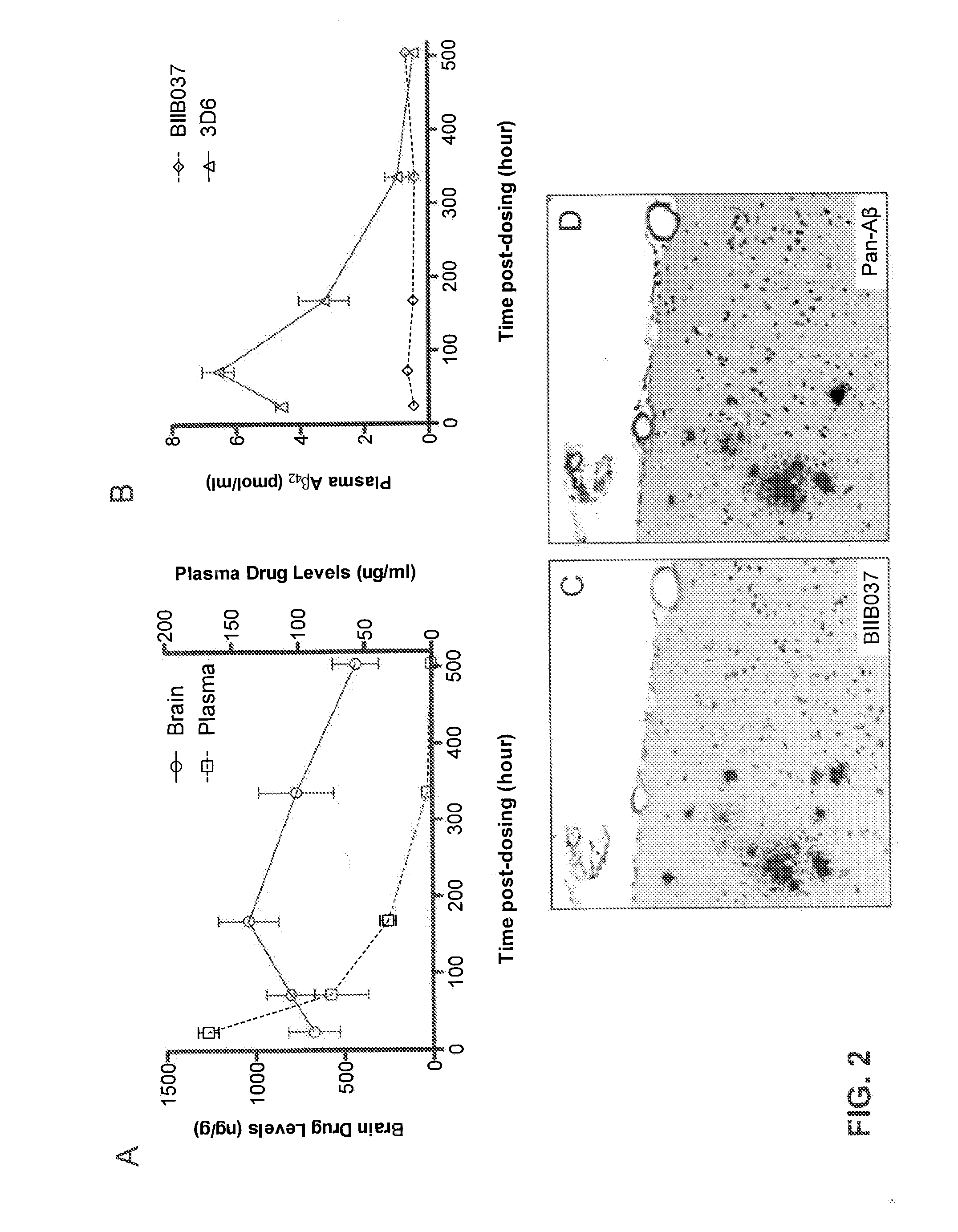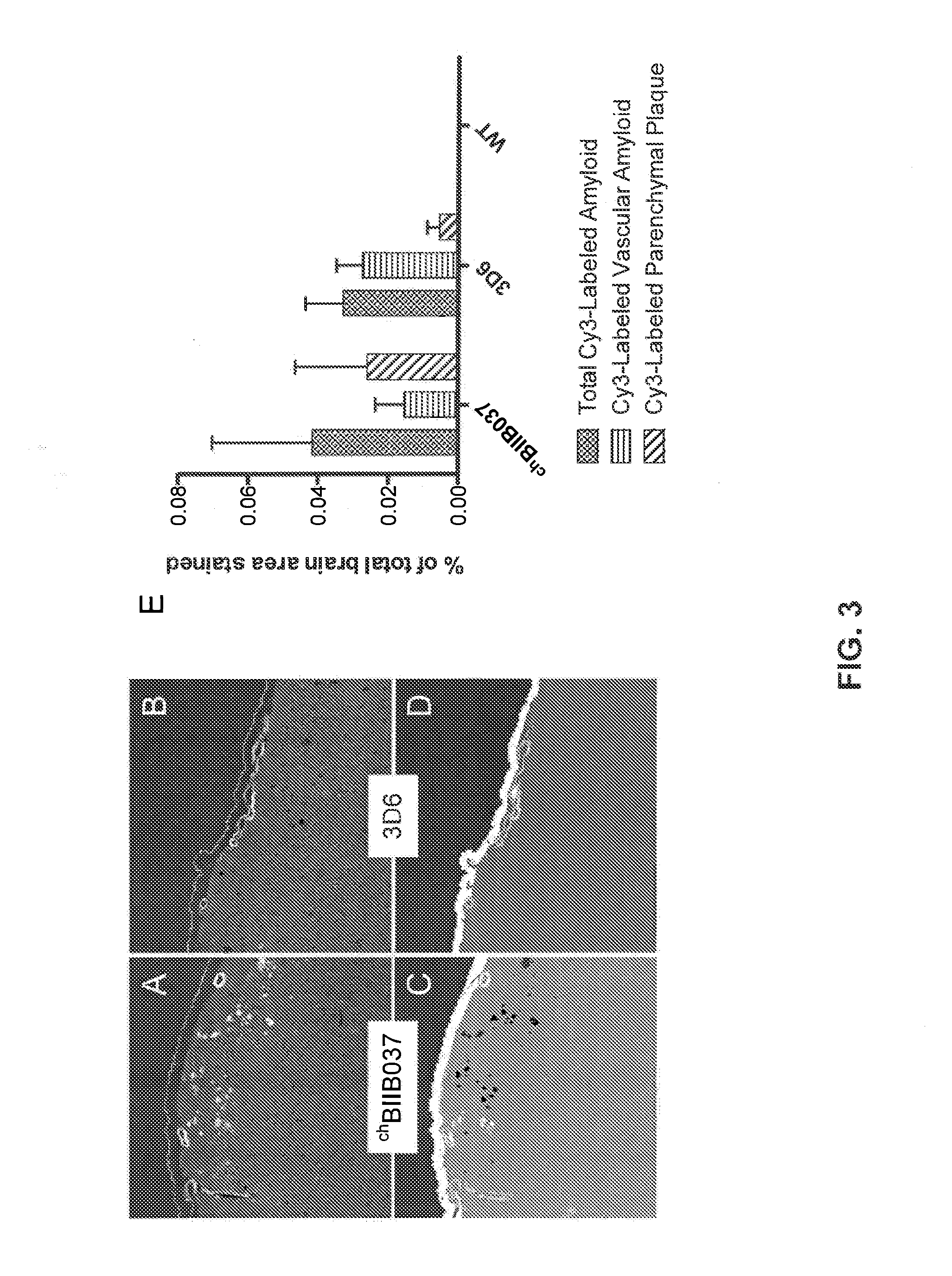A method of reducing brain amyloid plaques using Anti-ab antibodies
a brain amyloid and antibody technology, applied in the field of brain amyloid plaque reduction using antia antibodies, can solve the problems of hampered translation into a therapeutic approach in human beings, and achieve the effect of reducing brain amyloid plaques and reducing amyloid plaques
- Summary
- Abstract
- Description
- Claims
- Application Information
AI Technical Summary
Benefits of technology
Problems solved by technology
Method used
Image
Examples
example 1
Generalization and In Vitro Characterization of Human BIIB037 (“BIIB037”) and chimeric BIIB037 (“chBIIB037”)
[0182]This example describes BIIB037 and chBIIB037 antibody generation. In addition, the example describes the binding affinities and selectivities of BIIB037 and chBIIB037 antibody for Aβ, which were assessed using series of biochemical methods described herein.
[0183]Cohorts of healthy elderly subjects with excellent cognitive performance or remission from mild cognitive impairment (MCI) or beginning Alzheimer's disease (AD) were screened for Aβ-reactive memory B cells. Positive B-cell clones were subjected to cDNA cloning and recombinant expression to generate human monoclonal antibodies against Aβ as described previously in WO2008 / 081008. Candidate antibodies were selected by their capacity to recognize both aggregated Aβ in vitro and amyloid plaques ex vivo using a tissue plaque immunoreactivity (TAPIR) assay in both AD and APP transgenic mice brain sections (Hock et al., ...
example 2
Brain Penetration of BIIB037 After a Single Intra-Peritoneal Administration in Tg2576 Transgenic Mice
[0186]This example describes the ability of BIIB037 to penetrate into the brain and bind to Aβ. Penetration of BIIB037 into the brain was assessed in 22 month old female Tg2576 mice (Kawarabayashi et al., J Neurosci 21(2):372-381 (2001)), following acute dosing, i.e., single dose of BIIB037 at 30 mg / kg administered intraperitoneally.
[0187]BIIB037 plasma and brain concentrations were determined by ELISA at 1 and 3 days, and 1, 2, and 3 weeks following administration of the single dose of the antibody (FIG. 2A). Specifically, frozen brains were homogenized in 10 volumes (10 mL / g of wet tissue) of a solution containing 50 mM NaCl, 0.2% diethylamine (DEA), with protease inhibitors, and sonicated for approximately 15-20 s on ice. The samples were then centrifuged at 100,000 g for 30 min at 4° C. The supernatant was retained as the DEA extracted soluble Aβ fraction. The remaining pellets w...
example 3
Binding of chBIIB037 to Parenchymal Amyloid Plaques Following Acute Dosing in Tg2576 Transgenic Mice
[0189]This example further describes the differential chBIIB037 binding. Binding of chBIIB037 to parenchymal amyloid plaques following acute dosing in 22 month-old Tg2576 transgenic mice. Single dose (30 mg / kg) of Cy3-labeled chBIIB037, or Cy3-labeled 3D6, was administered intraperitoneally to Tg2576 transgenic mice, and brains were collected 18 days post-dosing. Frozen brain sections were immunostained for smooth muscle α-actin (SMA) in order to define the blood vessels, and were obtained as described above in Example 2. The binding of the antibody to Aβ deposits was revealed under fluorescent microscope, allowing for direct visualization of the Cy3-chBIIB037 binding to different types of amyloid deposits (FIG. 3A). Cy3-labeled 3D6 antibody was used as comparator for this study (FIG. 3C). The total area of parenchymal and vascular amyloid deposits decorated by the labeled antibodies ...
PUM
| Property | Measurement | Unit |
|---|---|---|
| concentration | aaaaa | aaaaa |
| concentration | aaaaa | aaaaa |
| concentration | aaaaa | aaaaa |
Abstract
Description
Claims
Application Information
 Login to View More
Login to View More - R&D
- Intellectual Property
- Life Sciences
- Materials
- Tech Scout
- Unparalleled Data Quality
- Higher Quality Content
- 60% Fewer Hallucinations
Browse by: Latest US Patents, China's latest patents, Technical Efficacy Thesaurus, Application Domain, Technology Topic, Popular Technical Reports.
© 2025 PatSnap. All rights reserved.Legal|Privacy policy|Modern Slavery Act Transparency Statement|Sitemap|About US| Contact US: help@patsnap.com



